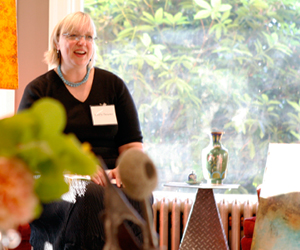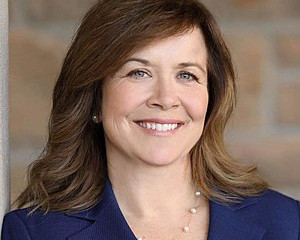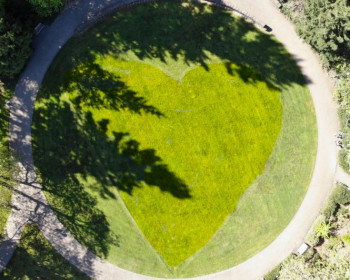Since that time, the college raised $125,000 for the memorial. Last winter, President Hochstettler appointed Linda Tesner, director and curator of the Hoffman Gallery for Contemporary Art, to chair the artist selection committee that will oversee the York project’s development. The committee held its first meeting on May 8. We sat down with Linda to talk about the project and timeline.
What goes into the development of a memorial project?
Patience. Developing a memorial takes a long time. The Holocaust Memorial in Washington Park, for example, took 10 years from idea to dedication. This is a collective process that will involve a large number of people. We have only one opportunity to honor York in the most appropriate and respectful way, and we want to do the best job possible.
To attract and find the best artist for this project will take several months of careful deliberation. Art is highly emotive and subjective in its appeal so we must be attentive to creating a selection process that everyone can feel confident about. Establishing a shared vision among the committee members will require building strong lines of communication and providing ample time to listen to each other through the deliberations. It will be a slow but valuable and meaningful process.
I expect that the committee will meet several times throughout the spring, summer and fall of 2008 to outline the criteria for an artist (region, cultural and ethnic heritage, professional experience), develop and distribute the RFQ (request for qualifications), narrow the field of candidates by carefully reviewing each entry, and meet face-to-face with the finalists before making a final decision. If everything goes well, we should be able to select the artist some time during the 2008-09 academic year.
Who is on the committee?
The committee is made up of representatives from the Lewis & Clark and Portland community and each person brings a unique perspective.
Debra Beers, senior art lecturer and head of the drawing program
John Callahan, Morgan S. Odell Professor of Humanities and literary executor for Ralph Ellison
Parasa Chanramy, undergraduate student
Se-ah-dom Edmo, program coordinator for Indigenous Ways of Knowing
Avril Gordley, Oregon state representative
Paula Hayes, CAS alumna
Chris Jay, CAS alum, First Vice President, Merrill Lynch & Co., Inc.
Darrell Milner, professor of Black Studies, Portland State University and York historian
Charles Neal, Lewis & Clark Law School alum
Mike Rathbun, visiting assistant professor of art
Lisa Webb, associate dean of students and director of multicultural affairs
Kristin Calhoun, public art manager, Regional Arts and Culture Council
What will the memorial look like and where will it be located?
While the college has raised a considerable amount of money, our goal to commission an original piece of art or craft a unique space to recognize York requires significant resources. Many public art projects are running anywhere from $500,000 to $1 million or more. The Holocaust Memorial project I mentioned earlier cost $1.5 million in hard costs alone. The committee will have to think creatively about how best to utilize the funds and what the long-term costs will be to maintain a project that should withstand the test of time. This isn’t an impossible task—it just makes it more interesting to think about the possibilities to do this in a respectful and fitting way!
It is up to the artist selection committee to build consensus on the parameters of what the art and space must accomplish. And, obviously, we will also rely on the artist’s vision for the medium and shape it will eventually take.
One interesting facet of this project is that while there is plenty of documentation about York’s contributions to the Lewis and Clark expedition, there is no rendering or description of York’s physical appearance. This offers endless possibilities for artists about how to envision the project, and what the artist selection committee collectively comes to find the best representation of him and his life.
Why is this project so important?
There is one memorial in Portland that features York with Lewis and Clark located at the University of Portland. However, our goal is to focus on York in a singular way—to make him the central figure of this piece of history. It’s especially appropriate and powerful to have a York memorial at the college that bears the name of the famed explorers. There is no better place to celebrate York’s contributions than at the institution named Lewis & Clark.
I think it’s also important to point out that while a physical representation of York on campus does not accomplish our diversity goals or fulfill our obligations, a public memorial to York will send a welcoming message to all our visitors and prospective students that we value and support a comprehensive history. We also hope and trust the York project can serve as an emblem and instigator for the bigger, deeper changes we all want in creating a diverse community at Lewis & Clark.
I would encourage the community to talk with artist selection committee members on campus about why they think this is important!


